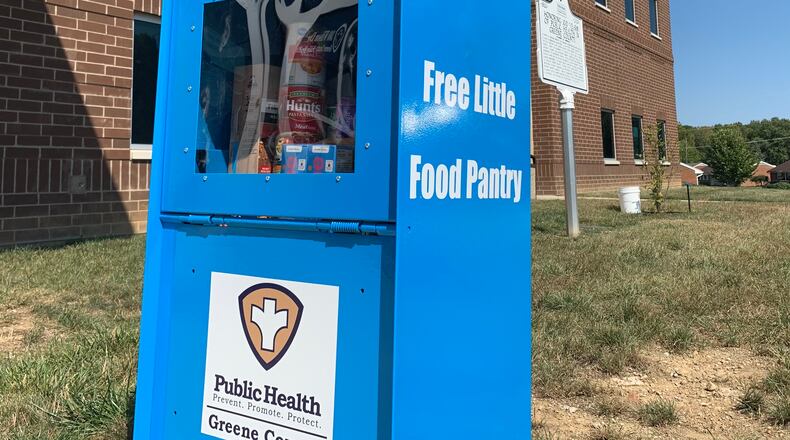“The cost of living — well, the cost of everything — has gone up. With the lost wages, it’s really driving people to find new ways to keep food on the table,” said Laurie Fox, public relations for Greene County Public Health.
The four pantries are at UR The Church on Columbus Street, outside Greene County Public Health in Xenia, at Fairborn WIC on Central Avenue in Fairborn and at the Jamestown Community Library on Seaman Drive.
Food deserts have been widely blamed for food insecurity in the United States, but inflation and the cost of food are also a major issue, according to data from the U.S. Department of Agriculture. In 2021, the bottom 20% of households with the lowest income spent 30.6% of what they made on food, the USDA reported, compared with 7.6% for families with the highest income.
Many churches in the Miami Valley and organizations like Feed the Creek in Beavercreek also operate their own little pantries. The small boxes of food around the community supplement, rather than replace, larger institutional food pantries like Greene County FISH Pantry and the Foodbank, which can provide fresh vegetables, fruit and meat to patrons, in addition to shelf-stable items, Fox said.
Staff at Greene County FISH previously told the Dayton Daily News their number of patrons have sharply increased post-pandemic, going from 500 to 600 families a month in 2018 to 1,400 families, and approximately 176,000 pounds of food distributed, in May 2023.
“I think we’re going to see people recovering from the pandemic for some time, because it really did a number on the community at large,” Fox said.
About the Author

